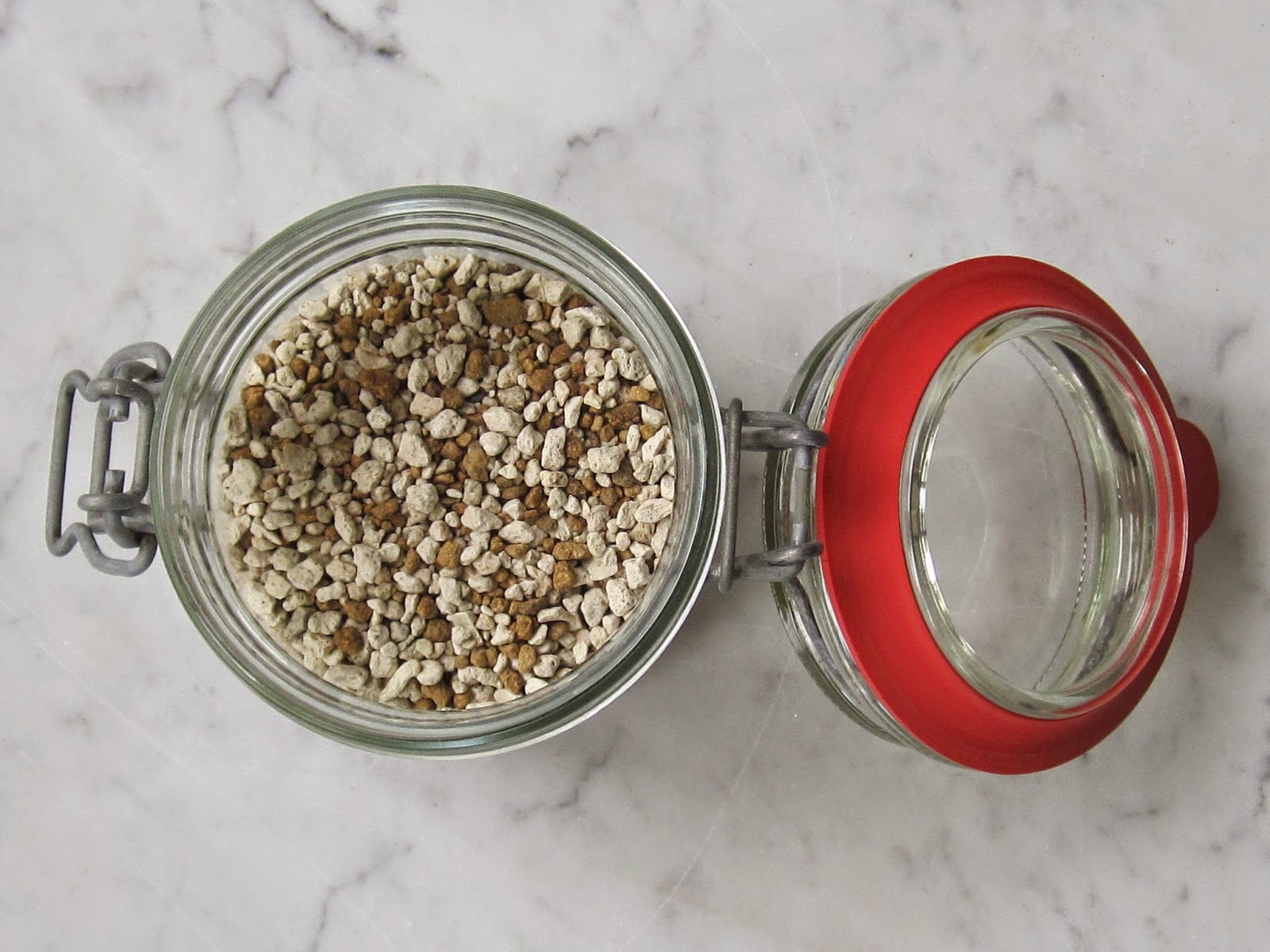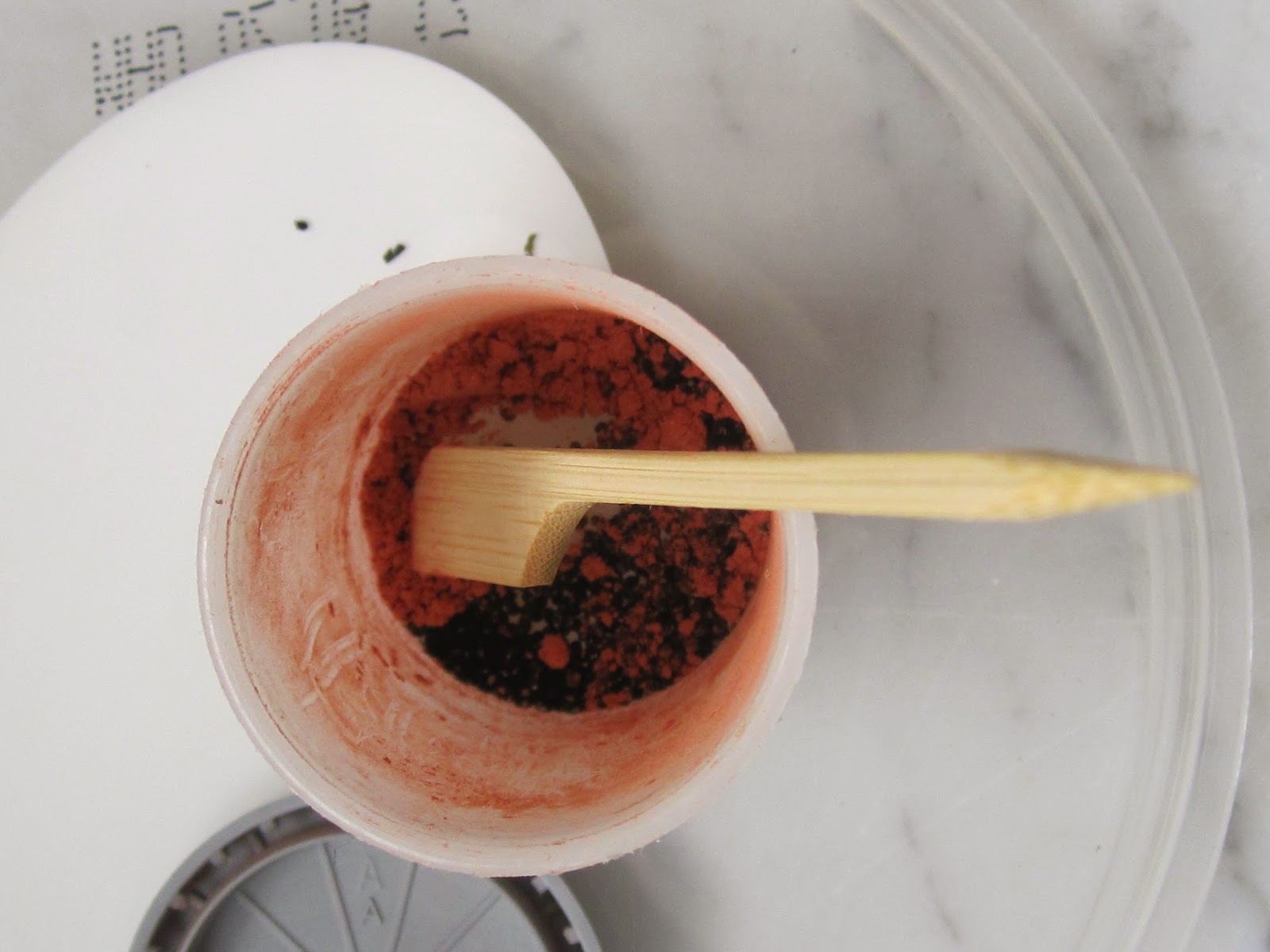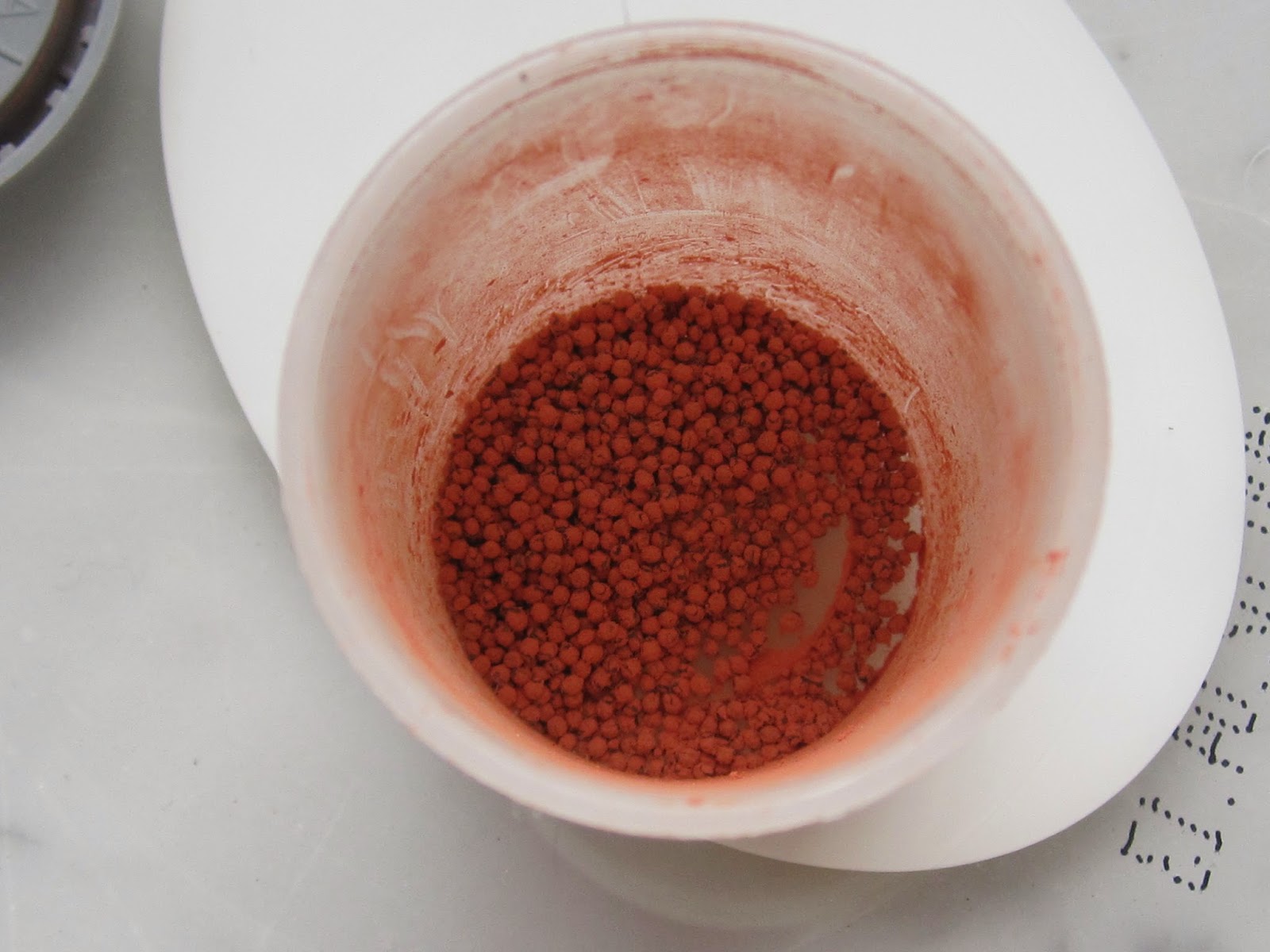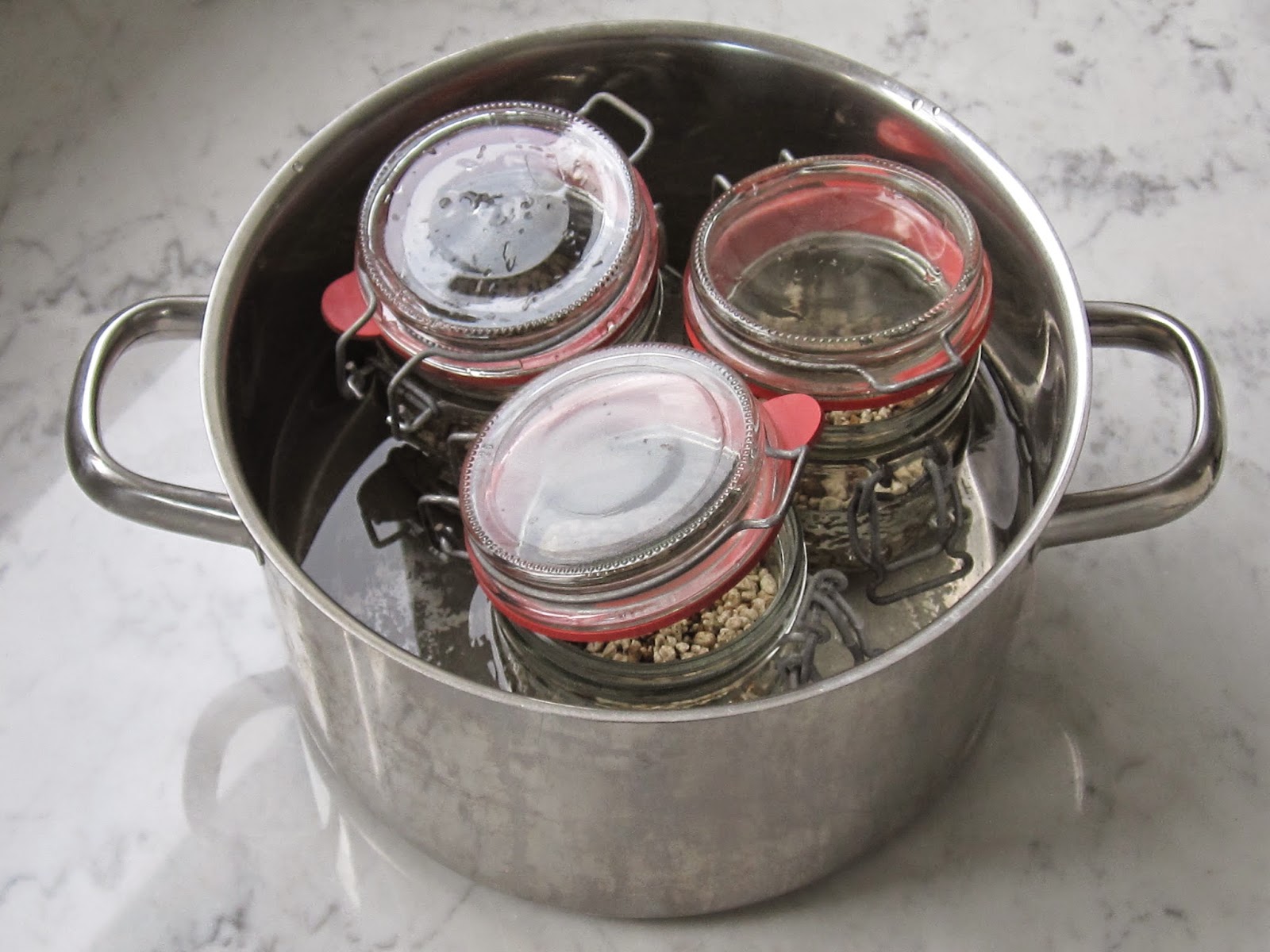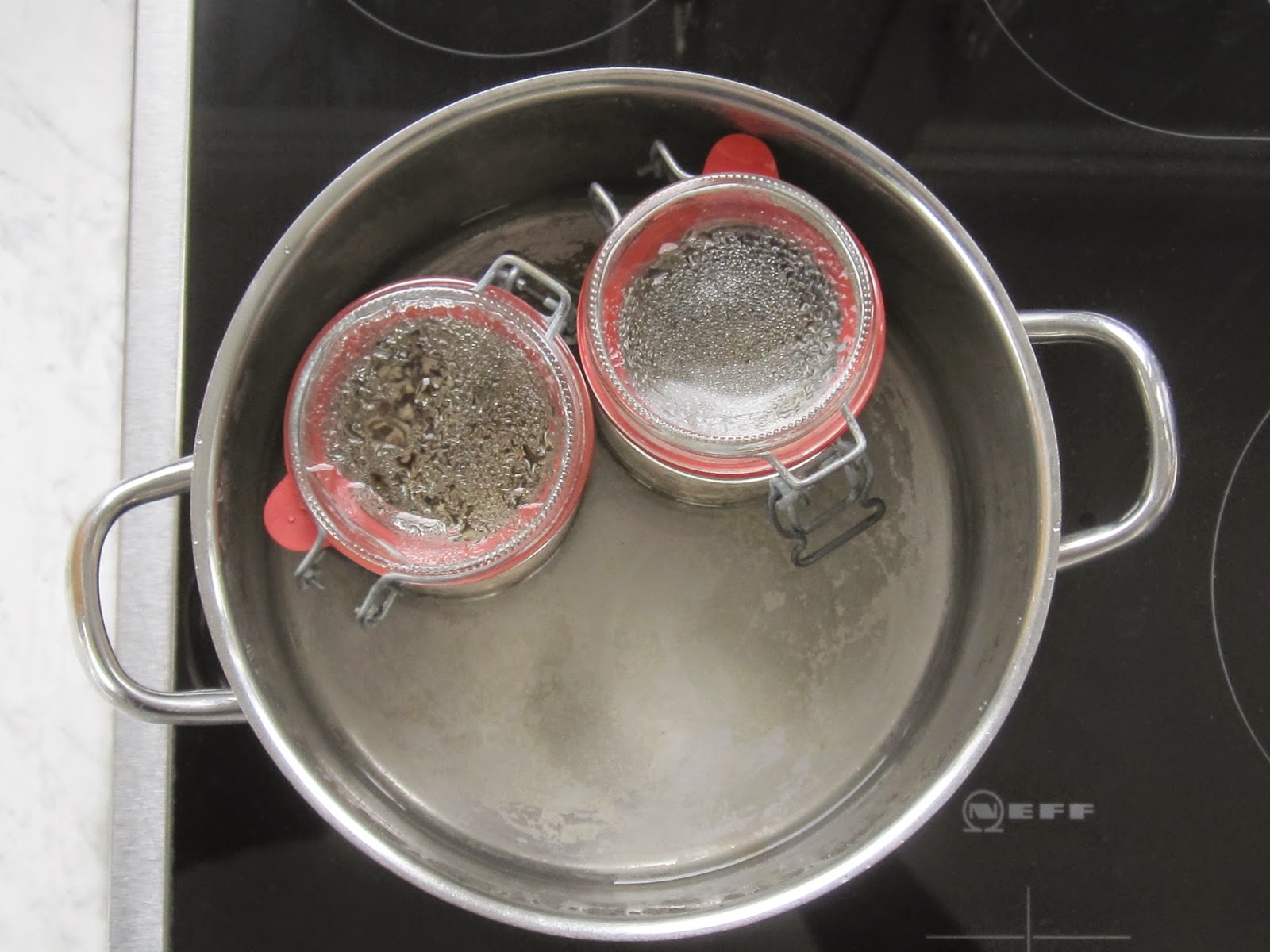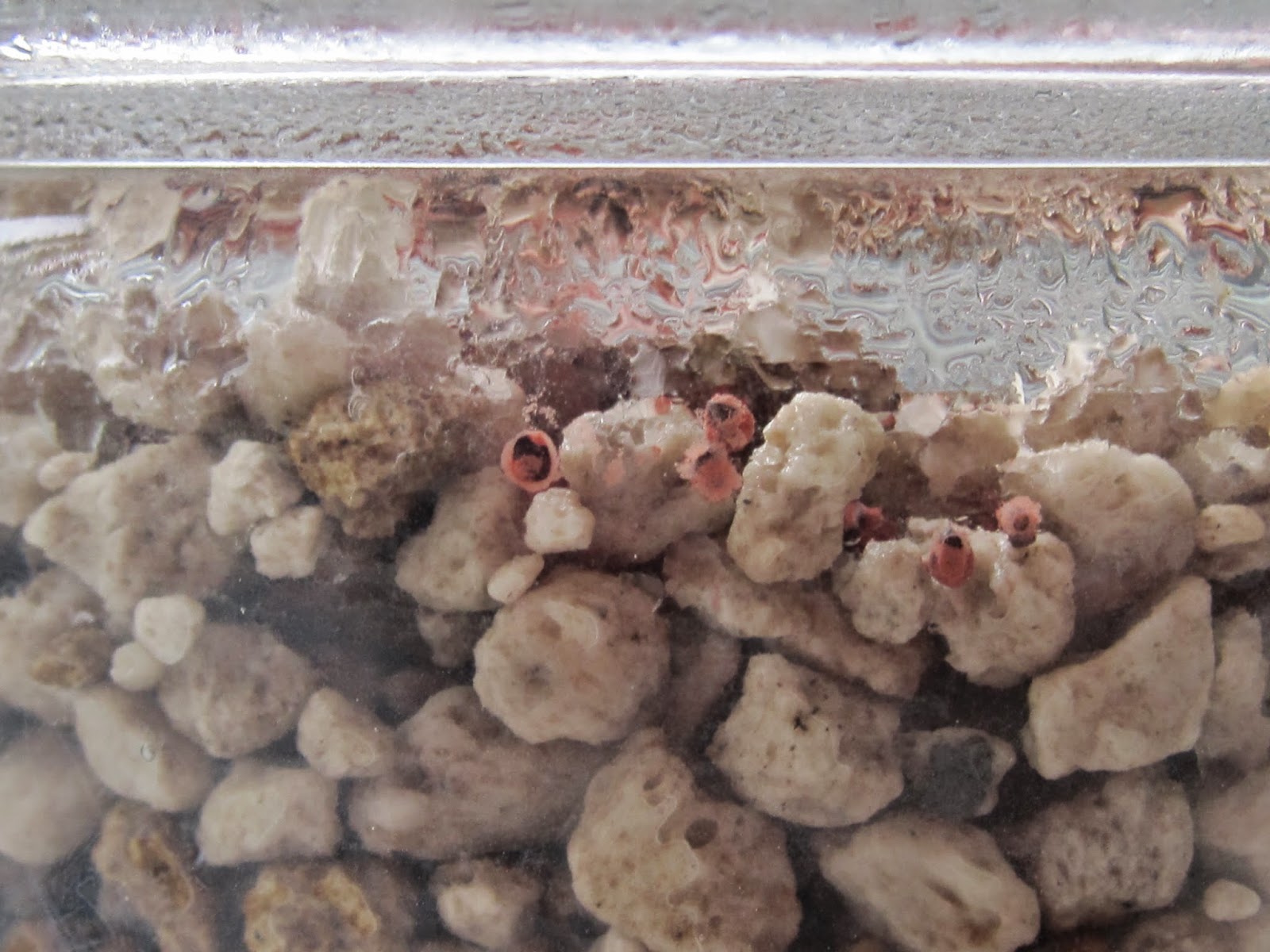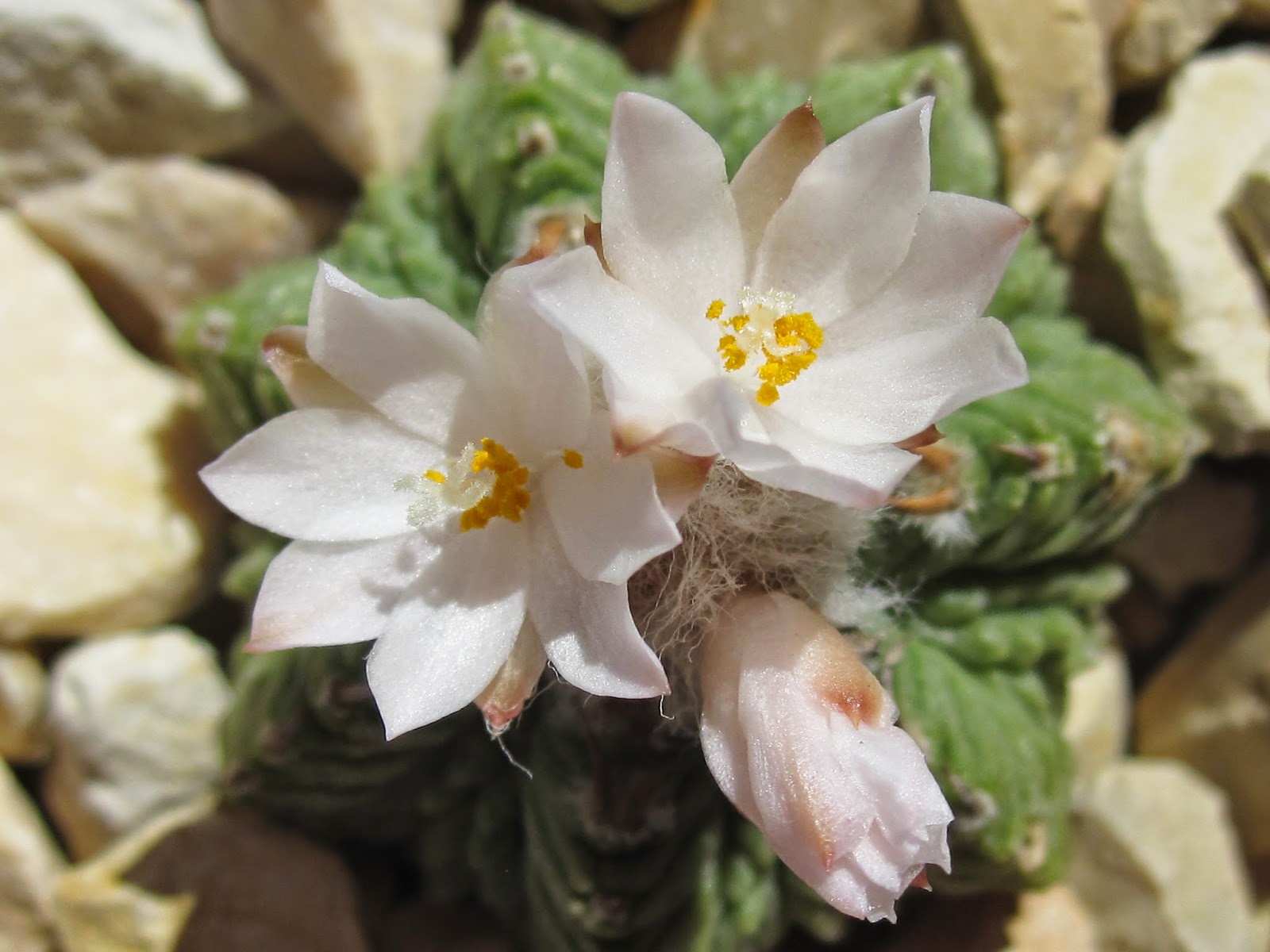I will show you how I sow my succulent seeds. The method is well known as "THE FLEISCHER METHOD", named after a famous grower of succulents from czechia who lived in the last century.
1. the substrate
I use allways mineral earths and most preferably BIMS ( = pumice ) and LAVA. For sowing I take the very fine grade. You can see, looking at the ruler, the dimension in cm of the grains.
2. the glass
I do use old honey or marmelade glasses which are all made of glass including the cover. So the seeds and seedlings will get the most possible light I can provide. The glasses will be filled up to one half or two thirds with the substrate.
3. disinfection of seeds
The treatment of the seeds will be done with AATIRAM, a fungicide powder. I use cups of photographic film rolls, add the seeds, add the powder and stir the whole mass with a tooth stick or brush or ...
Here you can see the seeds - the black globules - and the red fungicide powder.
This is how the end product looks like. The black seeds are covered over and over with the red fungicide powder.
4. sterilisation of the glass
The glasses with the substrate - ¡ without the seeds ! - are placed into a cooking bowl or... Then the substrate is soaked with a solution of water and fertilizer - only a very very low concentration of fertilizer.
The glass covers are only loosely closing the glasses. ! NEVER NEVER NEVER close the glasses with their cover completely ! The trick is that the boiling water and hot humid air can reach every place of the glass surface and the substrate within the glass pot.
Lastly I close the cooking bowl or... with the cover and let it cook at 100 C for about 30 to 60 minutes. The time of cooking depends upon the former sterility of the substrate.
You can use a pressure cooker or an autoclave as well. Of cause the cooking temperature and the time needed will be reduced vastly.
After cooking the glasses are looking like this...
5. sowing the seeds
I let cool down the glasses until they do have hand temperature - 30 C to 20 C - and then fill in the treated seeds. Make sure that the seeds are spread equally above the whole surface of the substrate. Then I close the cover. At last I put them at a half shaded half sunny place.
1. the substrate
I use allways mineral earths and most preferably BIMS ( = pumice ) and LAVA. For sowing I take the very fine grade. You can see, looking at the ruler, the dimension in cm of the grains.
2. the glass
I do use old honey or marmelade glasses which are all made of glass including the cover. So the seeds and seedlings will get the most possible light I can provide. The glasses will be filled up to one half or two thirds with the substrate.
3. disinfection of seeds
The treatment of the seeds will be done with AATIRAM, a fungicide powder. I use cups of photographic film rolls, add the seeds, add the powder and stir the whole mass with a tooth stick or brush or ...
Here you can see the seeds - the black globules - and the red fungicide powder.
This is how the end product looks like. The black seeds are covered over and over with the red fungicide powder.
4. sterilisation of the glass
The glasses with the substrate - ¡ without the seeds ! - are placed into a cooking bowl or... Then the substrate is soaked with a solution of water and fertilizer - only a very very low concentration of fertilizer.
The glass covers are only loosely closing the glasses. ! NEVER NEVER NEVER close the glasses with their cover completely ! The trick is that the boiling water and hot humid air can reach every place of the glass surface and the substrate within the glass pot.
Lastly I close the cooking bowl or... with the cover and let it cook at 100 C for about 30 to 60 minutes. The time of cooking depends upon the former sterility of the substrate.
You can use a pressure cooker or an autoclave as well. Of cause the cooking temperature and the time needed will be reduced vastly.
After cooking the glasses are looking like this...
5. sowing the seeds
I let cool down the glasses until they do have hand temperature - 30 C to 20 C - and then fill in the treated seeds. Make sure that the seeds are spread equally above the whole surface of the substrate. Then I close the cover. At last I put them at a half shaded half sunny place.



